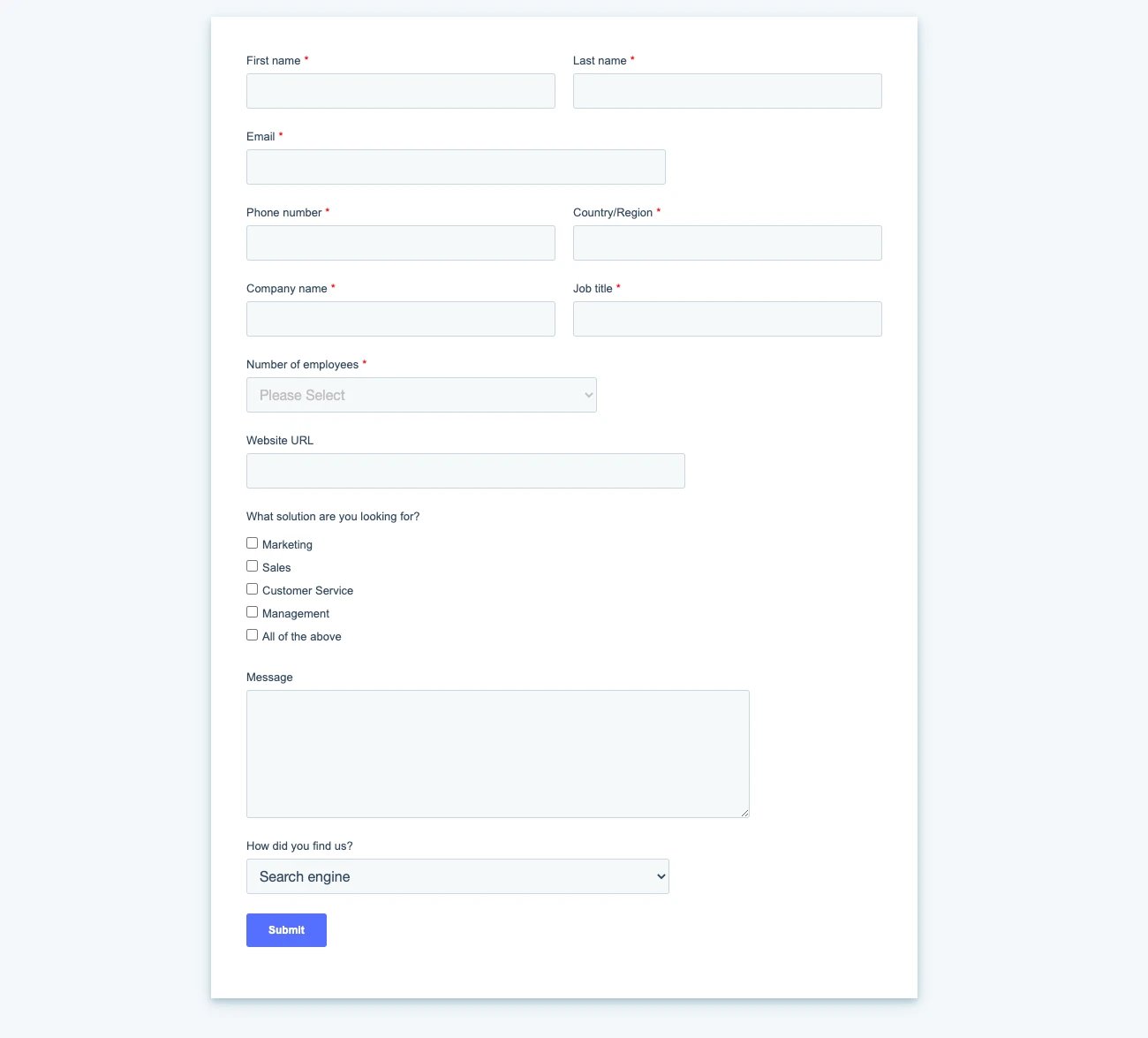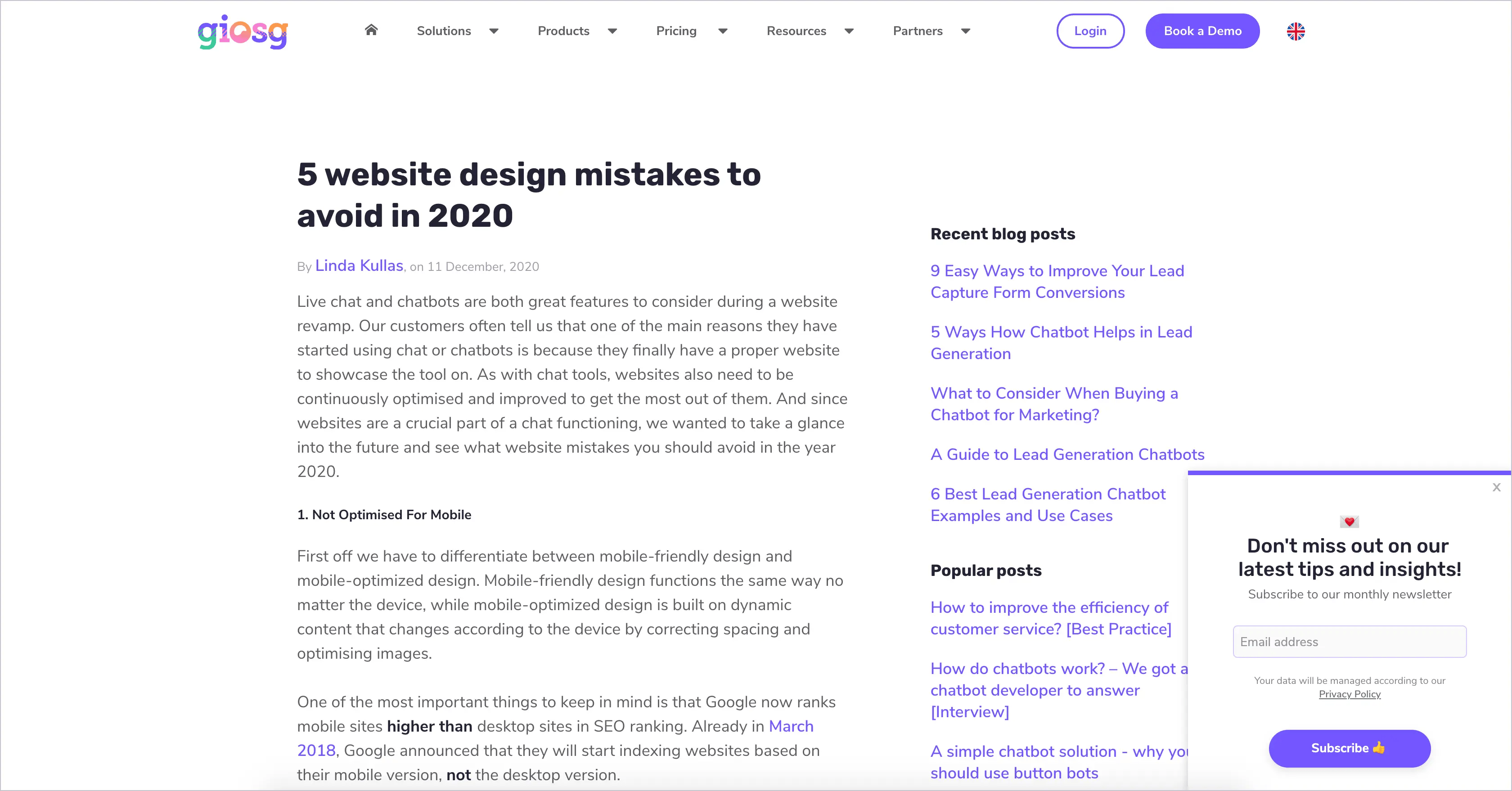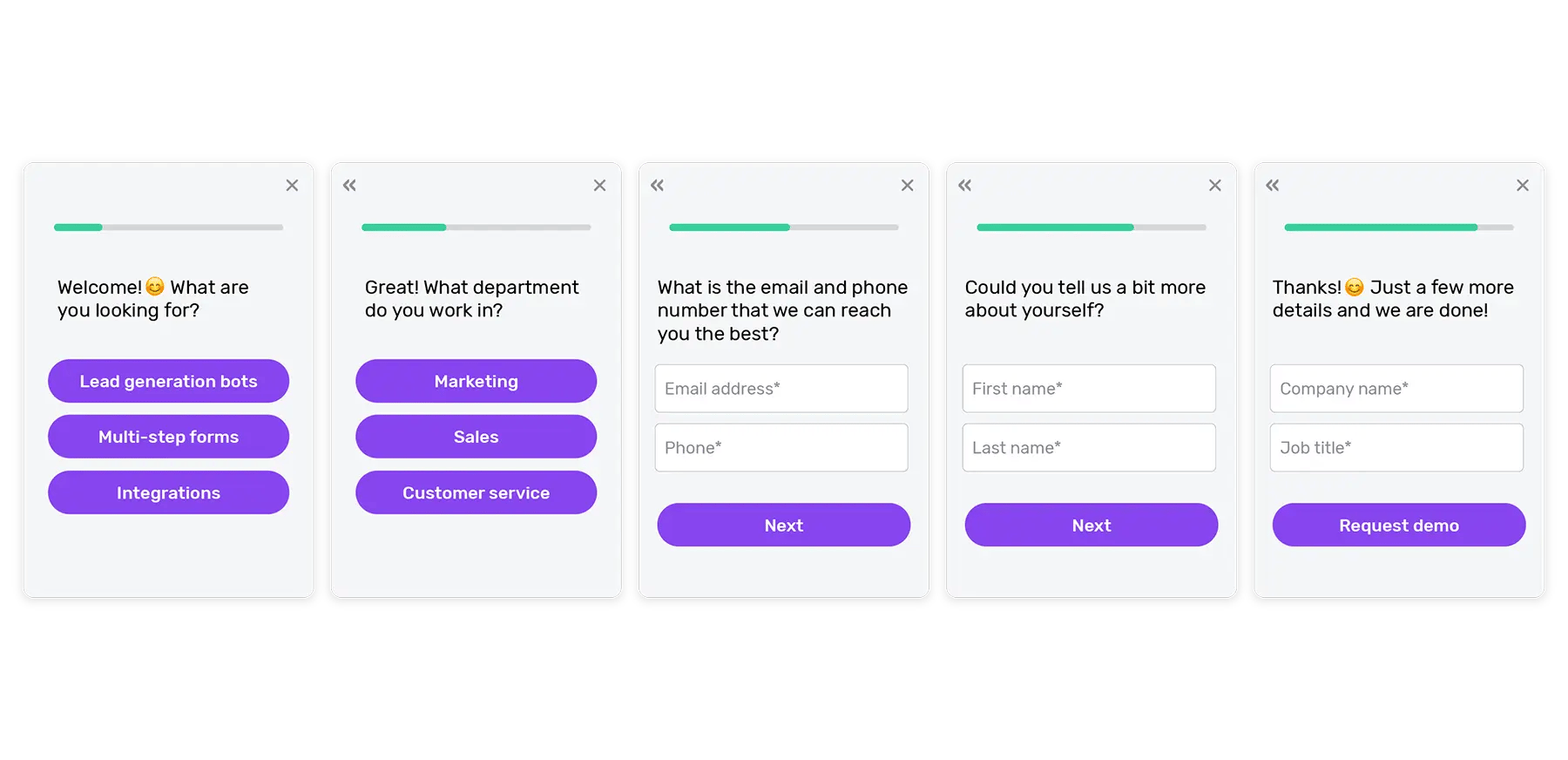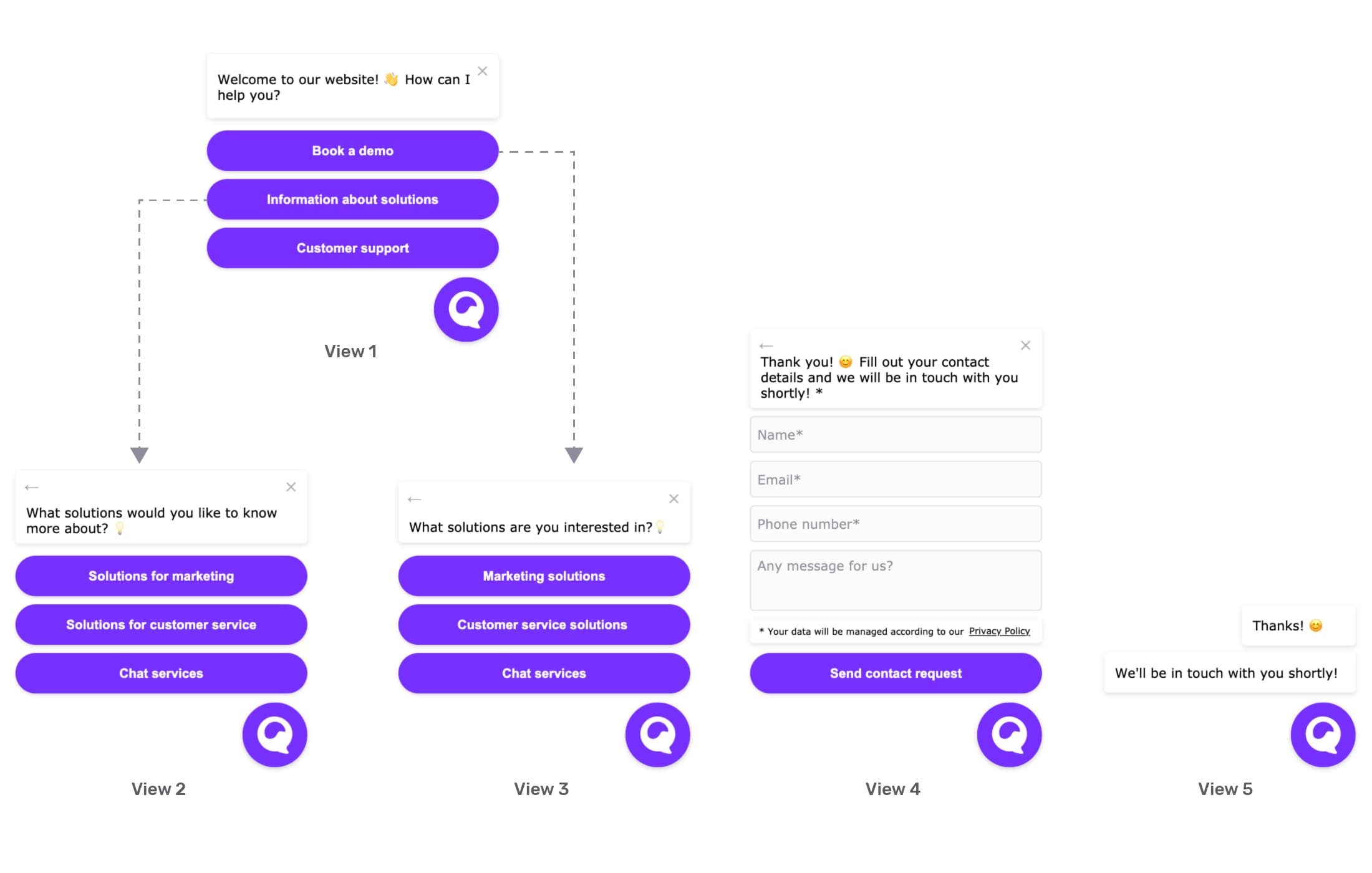How to collect the most relevant information from customers, while keeping them engaged? This is a common question that keeps circling back when marketers plan their lead capture and inbound marketing strategies.
Web forms are the go-to marketing tool in such cases, as they are simple, effective, and can be designed strategically to capture leads. However, when publishing new forms with online form builders, it’s important to know what works best. Is it single-step or multi-step forms?
This is because the goal is to make the user experience as effortless as possible so that website visitors can convert into new leads seamlessly.

In this blog we put single-step forms and multi-step forms head to head. We share the benefits and use of both forms like which one you should opt for and when to help you choose better.
Single-step forms
Single-step forms are not exactly as it sounds. They are basically web forms that list all the relevant queries on a single web page. It’s similar to the traditional static forms where everything is brought out to the table at once.
Now imagine entering a website for the first time and being stood up by an overwhelming list of questions, which need to be answered to redress your concern. Not the most desirable situation right?
This is how most customers feel when presented with a daunting, long format single-step form.
Including too many questions for collecting customer information creates a cognitive overload for the visitor which leads to higher abandonment rates.

Long static forms are no longer as effective, especially now when customers are highly aware and skeptical of what information they are sharing and why.
So, it's unlikely that visitors will engage after scrolling through the website and discovering a form with questions that they are not comfortable answering.
How to best use single-step forms?
To ensure visitor conversion, it's important to keep things simple. The most convenient alternative for conversion rate optimisation is to reduce the form fields and ask for only what is relevant. This will help win the user’s trust and minimise form friction.
A simple experiment conducted back in 2011, of reducing the form fields from 9 to 5, had increased the conversion rates by 13.4%. This practice is relevant even today, as just by reducing one form field boosted the conversion rate by 26% as stated here.
Therefore, single-step forms convert best when used for opt-ins or collecting basic customer information. The popular use cases being contact forms, newsletter subscription forms, or support forms. The trick is to make them attractive and place them strategically on the website to catch the user’s attention.
You can present them in the form of lead capture pop-ups, which create a sense of urgency and can be timed correctly so that the user is motivated to engage.

Therefore, if you want to make the best use of single-step forms, remember to keep it brief.
Any more than 4 questions with an additional CTA is probably too much. Plus the only reasons they should be ideally used for are collecting basic information like name & email or getting a subscription.
When not to use single-step forms?
However, all marketers know that it’s difficult to capture & qualify leads for the sales teams with generic customer details. So, single-step forms are not ideal for your lead generation campaigns that are built on attracting, educating, and engaging the customers.
Additionally, despite being an important part of the website they don't serve any purpose towards making customer engagement interactive or conversational.
Neither is it personalised according to customer interests & behaviour. But behold, the future of marketing is moving in an entirely new direction which is engagement-driven.
72% of the consumers have said that they only engage with personalised messaging. So, if you are wondering what is a better alternative to improve the lead capture form conversions, stay with us!
Multi-step forms
Unlike single-step forms, multi-step forms are exactly as they sound. They are innovative web forms with multiple steps. It doesn’t imply multiple form fields but sets of questions put together in separate steps or views.
So, multi-step forms serve as interesting tools for customer engagement as it breaks down the form into smaller segments, to reduce the question overload for the visitor. It results in 86% higher conversions because it's practical yet simple and doesn’t intimidate the visitor with an overwhelming list of questions.
Forms with multiple steps also help to secure and qualify quality leads because the forms are strategically designed to collect information over and above the generic single-step form queries. The latter doesn’t showcase visitor interest, nor does it provide relevant detail to qualify the prospect as an ideal lead.

Consider being in the real estate business. It's highly crucial to understand customer preferences, their budget & requirements before qualifying them as relevant leads for different salespeople.
Multi-step forms can help in this process by creating an engaging experience with alternative questions that customers are interested to answer.
Similarly, industries like automotive, financial services, retail among others can be highly driven by online lead capture forms like multi-step. As it not only helps to source leads but also educate & engage with the visitors.
Why are multi-step forms ideal for increasing conversion rates?
When engaging with a multi-step form, every question that a visitor answer is a small commitment made towards proceeding to the next. Therefore, once those previous questions are answered they are already invested in the process and must follow through so that they can reach the end.
Imagine yourself speaking with a sales representative - the latter shares all the essential details about a product that you are really interested in. Then he asks you relevant questions based on the pain points you have shared.
Now that you are thoroughly involved in this discussion and start feeling that you have found your need-and-product match, will you step away randomly or would you want to complete the process to see how this discussion may help you further?
Similarly, multi-step forms are strategically designed in a way to make the best out of such user engagement practices. Additionally, a single form view with minimum questions is less overwhelming when compared to multiple questions in a single form. It motivates the user to answer the questions and thereby convert as a potential lead.
These forms are also highly dynamic as they can be structured and restructured as per the current needs, while still keeping it short & simple!
We don’t see this potential in single-step forms. This means that visitors can be guided to different paths/questions as per their answers to a multiple-choice question.
This creates an interactive chatbot-like experience that is personalised and relevant.

How to best use multi-step forms?
The dynamic nature of multi-step forms makes it suitable for all types of businesses both B2B & B2C. As mentioned above it is an effective tool for lead generation, so it can be used for any marketing or lead generation campaigns. Additionally as demo booking forms or simply for collecting visitor information online.
They can be added to the website as lead capture forms or fun and engaging pop-ups which are targeted according to the user actions. The forms can be integrated with multiple pre-defined answers which makes it user-friendly and simplifies the form filling process.
You can also learn more about how to create lead generation form templates to boost conversions.
Each of these multi-step form types can create an engaging experience for the user. Many businesses still don’t realise its potential. They are missing out on relevant leads despite driving website traffic because the conversion rate is compromised by traditional customer engagement methods.
In practice implementation of multi-step forms must also be accompanied by few optimisation tactics, to unlock its full potential and achieve maximum benefits.
What are the benefits of using multi-step forms?
Here is a shortlist of all the benefits multi-step forms can offer so that you can put them into consideration and practice before planning your next lead generation strategy.
- They have a higher potential to boost lead conversion
- They secure quality leads for the sales team with relevant customer information
- They reduce the cognitive overload for the visitor
- They are user-centric
- Visually appealing unlike overwhelming single-step forms
- They save space on your website
- Can be implemented for multiple use cases
Getting started with lead generation forms
So, before hopping on the controversial bandwagon of online forms and sealing the deal with one of these two - single-step or multi-step, there are several things you must consider.
Like what is the need or purpose of the form, do you need to boost your conversions, which form can you best structure as per your need, among others.
The answer is simple once you have planned out your strategy and vision for implementing the lead generation form.
Going by the use cases, purpose, and benefits listed for each of these forms, we hope you can make the rightful choice. You can also try A/B testing different versions on your website with giosg’s pre-built multi-step form templates.
So, make the best use of your online forms and book a demo today to amp up your lead capture strategies.